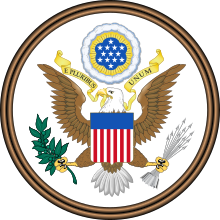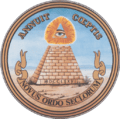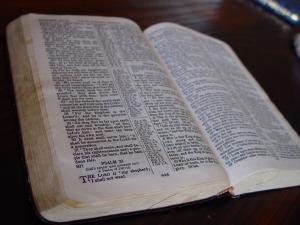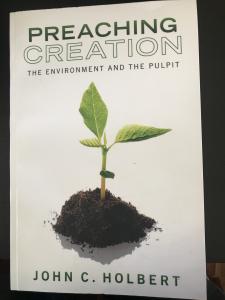 I well remember a small book written for the United Methodist Women in celebration of the American Bi-centennial in 1976. It was written by a UM Bishop, James Armstrong, and was entitled “The Nation Yet to Be.” During the heavily patriotic festivities marking the 200-year founding of the nation, this book raised a sharp series of questions suggesting that our celebrations should be tempered with serious and careful looks at the multiple ways in which the nation had yet to live up to its lofty aspirations. Issues like our recently concluded debacle in Viet Nam, and the enormous demonstrations against the war, the governmental confusions around the Watergate mess that led to the first presidential resignation in our history, our horrifying treatment of Native Americans over many years, and the vast problems surrounding race relations, problems that had persisted since slaves first came to the shores of what would become the USA early in the 17th century, needed to be remembered and addressed along with the hoopla of military flyovers, tall ships in eastern harbors, and piously lofty speeches that issued from politicians and clergy from pulpits and platforms across the land.
I well remember a small book written for the United Methodist Women in celebration of the American Bi-centennial in 1976. It was written by a UM Bishop, James Armstrong, and was entitled “The Nation Yet to Be.” During the heavily patriotic festivities marking the 200-year founding of the nation, this book raised a sharp series of questions suggesting that our celebrations should be tempered with serious and careful looks at the multiple ways in which the nation had yet to live up to its lofty aspirations. Issues like our recently concluded debacle in Viet Nam, and the enormous demonstrations against the war, the governmental confusions around the Watergate mess that led to the first presidential resignation in our history, our horrifying treatment of Native Americans over many years, and the vast problems surrounding race relations, problems that had persisted since slaves first came to the shores of what would become the USA early in the 17th century, needed to be remembered and addressed along with the hoopla of military flyovers, tall ships in eastern harbors, and piously lofty speeches that issued from politicians and clergy from pulpits and platforms across the land.
Many United Methodist readers of that book were not pleased to be reminded of the many ways the US was not all that it was purported to be. Bishop Armstrong was a vocal antagonist against the war in Viet Nam, and had been excoriated by many Methodists, and others, for his strong and public stance. Many saw his book as more of the same: a liberal screed against the “greatest nation on earth,” the “shining city on the hill,” a phrase Ronald Reagan would repeat on his way to the White House in 1980. For those of us privileged to live long enough to recall those heady days, and to find ourselves still alive in 2020, over 40 years later, it is notable that we are in somewhat similar times once again. We have a president who shouts that America is great, in fact greater than all other nations in every way, while many of the same issues of division and pain bedevil us still: a bloated military, abuse of Native peoples, a government that barely seems to work for the benefit of all the nation’s citizens, and, most of all, a continued sharp division among the various races of the country, most especially between African- American and White members of the society. Our history continues to repeat itself despite many valiant efforts to move us toward our best affirmations about ourselves.
And exactly what are those affirmations? Where might they be found? I suggest that a closer look at our ubiquitous One Dollar Bill reveals rather sharply and distinctively just what we all hope that the USA may one day be. So, take out a dollar, if you can find one, and look with me as we peruse its two familiar, yet perhaps not so familiar, light green sides. We first look, I imagine, at the famous portrait of the nation’s first president, George Washington, his bewigged visage gazing out of his oval frame with a stern and decisive look. I will not bore you with all of the information about printing that may be discovered on that front side, but you might look to the right side at the Department of the Treasury seal fixed in the midst of the large ONE. It bears a scale or balance, presented as level, suggesting that equality of justice sought for the nation, while the key below indicates the authority lying behind the dollar bill. On the shield, behind the scales, there are 13 stars, not the last time the original 13 colonies will be pictured on the bill.
Now turn the bill over, and the symbolic fun will really begin. On this side of the dollar, we find the Great Seal of the USA, that is both of its sides. The front of the seal in on the right, and the back of the seal is on the left. The Great Seal was created in 1782, and remained a kind of unofficial carrier of the motto of the nation until 1956, the year that Dwight Eisenhower made “In God We Trust” the official motto of the country. Many of you may remember that it was about then when we all had to add the phrase “under God” to the pledge of allegiance that we all recited in those days at the beginning of each school day. But the unofficial motto was “E Pluribus Unum,” Latin for “out of the many, one.” Its original meaning had to do with the 13 colonies, each individual communities of peoples becoming one in the birth of the new nation of the USA. The number 13 runs wild on this side of the seal: 13 stars above the eagle, 13 stripes on the seal, 13 leaves and 13 fruits on the olive branch in the right talon of the eagle, and 13 arrows in the left talon. In the very early years of the 19th century, the olive branch and the arrows were reversed in the talons, arrows on the right, olive branch on the left. To certain foreign nations this representation appeared warlike with the arrows in the favored right talons, so they were reversed to suggest that America’s first interest was peace with neighbors. It has been said that the USA has rarely been out of one war or another for nearly all of its history, so perhaps the arrows should be in the right talon after all.
In our day, it has rightly been suggested that the motto, E Pluribus Unum,” remains a very good one, an aspirational phrase for the nation. Because we are a nation of immigrants, seeking this land as a place of hope and freedom, this can be a place where the many may indeed become one. However, because the ancestors of African-Americans did not come freely to this land, but were stolen and forced to come here to labor in chains for white masters, their participation in the “becoming one” has long been thwarted by this appalling history. The sin of slavery has birthed the sin of racism, and we are still struggling to find ways to include fully and equally these citizens of the nation. The past month has again reminded us that that journey to “unum” will be long and painful.
The back of the great seal, on the left side of the bill, includes two more Latin phrases. Latin was long the lingua franca of the educated class of human beings, so though its use is now confined to decreasing numbers of classrooms and the hallways and nooks of the Vatican, the residue of its near ubiquity appears in numerous spots. The top of the backside of the seal reads “annuit coeptis,” “he favors (approves) our (the) undertaking.” I assume that the “he” is God, who is favoring what the nation is trying to achieve. And what that is may be found below the pyramid in the phrase, “novus ordo seclorum” or “a new order of the ages.” The founders of the nation thought they were in fact creating something new, a fresh start for a world exhausted by centuries of wars and religious strife. Hence, the first amendment to the Constitution of the new nation promised absolute freedom from all religious, speech, and press suppressions, thereby hoping against hope that in this place, at least, genuine freedom for all would be found and practiced. Yet, then as now, there lived those pesky African-American persons who were not invited to this fresh party, though their free labor—free for their owners, that is- – made much of the party possible. It is quite clear now, perhaps less so then, that God in fact “did not approve their undertaking,” but “non annuit ceoptis” would hardly make a fine motto for a new country.
The pyramid (note the 13 steps!) on the backside of the seal is an ancient symbol of solidity and permanence, and the Roman numerals carved into its base is 1776, the traditional year of the founding of the republic and its declaration of independence from Britain. That all-seeing eye that forms the top of the pyramid is the eye of God, a Masonic symbol (many of the early founders were Masons) that suggests that in the end God sees all that is happening on the earth that God has made. And in the end God sees all that the nation of the USA aspires to and actually does. Thus, on this lowly dollar bill reside both the nation’s hopes as well as its desires to become better than it so far has been able to become. I still like the title of Bishop Armstrong’s book of 44 years ago; we still are “a nation yet to be,” and we may only hope that we are moving toward the time when we may be one with each other, that we may be a genuinely new order of things, and that God’s eye will look upon us and truly favor our undertakings. May it all be so!
(Images from Wikimedia Commons)











